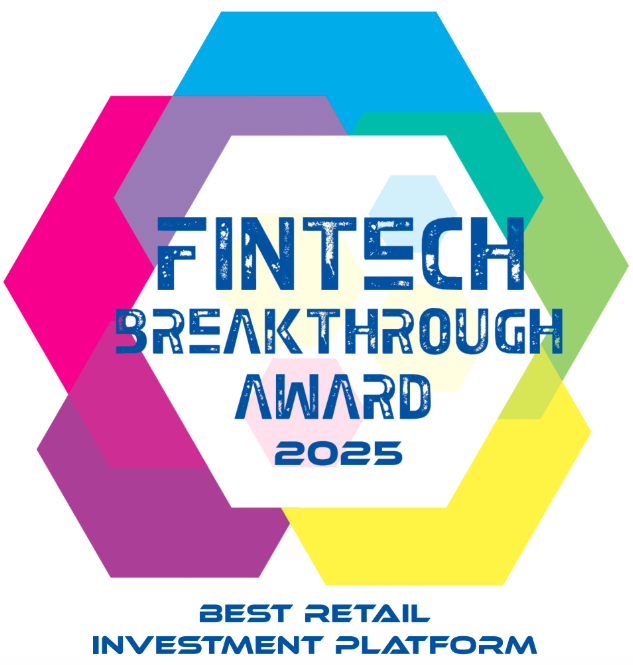We enter the second quarter of 2025 with more muted deal activity than many expected. The uptick in exits that many anticipated has yet to be seen. Instead, investor confidence has been shaken by recent market volatility. Concerns about inflation, tariffs and the broader health of the economy have pummeled the public markets. As of this writing, the S&P is down over 13% year-to-date. This has led to a more cautious environment for deal making.
Despite the broader macroeconomic malaise, the venture market continued to grow, driven by demand for tech investments particularly in artificial intelligence and machine learning. In the first quarter of 2025, U.S. venture capital investment reached $91.5 billion, marking a notable 116% increase compared to the same period in 2024. However, this substantial growth was largely driven by a single $40 billion funding round by OpenAI, underscoring the concentration of capital in select high-profile deals. Excluding this transaction, the overall investment levels remained consistent with previous years, highlighting a broader trend of cautious investment behavior amid economic uncertainties.
Deals and Distributions Declined
Despite the influx of capital into the VC market, the total number of deals declined by 25% in the first quarter, indicating a more selective investment approach by private market investors. This selectivity reflects concerns over market volatility, inflationary pressures, and geopolitical tensions, all of which have contributed to a more risk-averse investment climate. Additionally, the venture market continues to grapple with a dearth of exit opportunities, such as initial public offerings (IPOs) and mergers and acquisitions (M&A), further complicating the liquidity landscape for investors and startups alike.
Despite the fact that venture exit distributions remain at 6.5%, we saw a few buds of spring in late Q1. CoreWeave, the first big tech IPO of the year, made its public market debut. Its IPO accounted for 26% of the total exit value this year. While the stock traded down on its first day, we were then reminded that the first day of trading doesn’t tell the whole story. Since its IPO, CRWV stock has soared, gaining over 40%. Even after the market correction, the stock is still trading up over 20%2, wildly outperforming the broader market.
Over the end of the first quarter several high profile private companies filed for U.S. IPOs including Circle, eToro, Klarna, and MNTN. This suggested that exit activity might pick up in the second quarter. Since then, the market has turned and many of these companies have chosen to pause their IPO plans. In the meantime, private market secondaries have become all the more important - both to provide liquidity to investors and employees and investment access to more investors pre-IPO.
Secondaries Stepped Up
While the public markets have soured, the private secondary market has stepped up. The secondary market continues to grow with estimates placing the current U.S. VC secondary market size between $41.8 billion and $59.9 billion. This includes newsworthy tender offers like those by Stripe, Databricks, SpaceX and OpenAI - some of the most coveted names in the private market. This growth is further evidenced by the substantial increase in dedicated secondary funds. Dry powder for venture secondary funds more than doubled since 2022, reaching $7.2 billion as of June 2024.
This growth has been driven by investors who “prefer secondaries’ lower barrier to entry, including shorter investment timelines and lower risk by investing in mature companies with proven business models.”3 As Larry Fink stated in BlackRock’s recent annual letter “Assets that will define the future—data centers, ports, power grids, the world’s fastest-growing private companies—aren’t available to most investors. They're in private markets, locked behind high walls, with gates that open only for the wealthiest or largest market participants.” Investors are tired of waiting for these companies to go public and are joining the private secondary market en masse to participate.
So which private companies and industries shone the brightest in the first quarter? For our Secondary Spotlight we analyzed thousands of data points from EquityZen’s platform to identify the key trends that drove the private secondary market. Let’s dive in.
More Premiums, Fewer Discounts
 Secondary trading picked up in Q1, with more companies trading at a premium to their last round of primary funding than the prior ten quarters. This ratio of premium to discount deals had not been seen since Q2 of 2022. While more companies traded at a premium than we’d seen in recent history, the average company traded at a 16% discount to its last round of funding. This marks a slight decrease to the 20% average discount we saw in Q4 of 2024. The increase in companies trading at either a premium or a lesser discount reflects the growth we have seen in the secondary market and investor appetite for growing technology companies.
Secondary trading picked up in Q1, with more companies trading at a premium to their last round of primary funding than the prior ten quarters. This ratio of premium to discount deals had not been seen since Q2 of 2022. While more companies traded at a premium than we’d seen in recent history, the average company traded at a 16% discount to its last round of funding. This marks a slight decrease to the 20% average discount we saw in Q4 of 2024. The increase in companies trading at either a premium or a lesser discount reflects the growth we have seen in the secondary market and investor appetite for growing technology companies.
Fintech Companies Traded Up
 Across all industries, fintech companies saw the most deals at a premium to a given company’s last round of funding. This was partially driven by the uptick in demand for crypto companies, with companies like Kraken and Ripple trading at higher premiums. Investor sentiment for crypto has been buoyed by the Trump administration’s support for crypto and blockchain along with regulatory wins for companies like Ripple. Klarna also traded higher, with investors potentially optimistic about the company’s expected IPO plans later this year.
Across all industries, fintech companies saw the most deals at a premium to a given company’s last round of funding. This was partially driven by the uptick in demand for crypto companies, with companies like Kraken and Ripple trading at higher premiums. Investor sentiment for crypto has been buoyed by the Trump administration’s support for crypto and blockchain along with regulatory wins for companies like Ripple. Klarna also traded higher, with investors potentially optimistic about the company’s expected IPO plans later this year.
National Security is Trending
 It likely comes as no surprise that artificial intelligence and machine learning remain the most in demand industries amongst EquityZen investors - a ranking they’ve held for over two years. Over the last quarter, Fintech and Information Technology held strong footing within the top four industries. Within Fintech, recent IPO news for Klarna and eToro suggest a pick up in deal activity.
It likely comes as no surprise that artificial intelligence and machine learning remain the most in demand industries amongst EquityZen investors - a ranking they’ve held for over two years. Over the last quarter, Fintech and Information Technology held strong footing within the top four industries. Within Fintech, recent IPO news for Klarna and eToro suggest a pick up in deal activity.
Most interestingly, National Security has joined the rankings out of near obscurity.4 This industry, which includes defense and military, intelligence and counterterrorism companies has seen notable growth in popularity, making the number six rank last quarter. The Department of Defense is slated for a $850 billion budget this year, with a focus on public-private partnerships and investments in cutting-edge technology. Private companies like Anduril and Helsing are just a few examples of leading innovators in the industry that are peaking investor interest.
The Most Popular Companies
The list of the most popular companies amongst EquityZen investors is a laundry list of household names. The top ten companies include a diverse mix of industries from space travel to artificial intelligence, crypto, defense, fintech, and gaming. EquityZen offered investments in 90% of these companies in Q1 2025.
.png?width=940&height=788&name=Add%20a%20subheading%20(5).png)
Popularity is not static though. New up and coming companies are continually innovating and shifting the market dynamic. Last quarter we saw OLIPOP soar in popularity, potentially spurred by news of PepsiCo’s acquisition of its main competitor Poppi for nearly $2 billion. Meanwhile, Europe made the map as two European companies - French AI company Mistral AI and German defense tech company Helsing - both surged in popularity.5
A Middle Aged Comeback
 Over the past few quarters we’ve reported that both older (10+ years since founding) and younger (<5 years since founding) companies have dominated investor interest. In the first quarter, this trend started to change. While younger companies have maintained their proportion of overall investor interest, “middle aged” companies (6-10 years old) are gaining interest at the cost of older companies.6 Some of these middle aged companies include OpenAI, Shield AI, and Anduril.
Over the past few quarters we’ve reported that both older (10+ years since founding) and younger (<5 years since founding) companies have dominated investor interest. In the first quarter, this trend started to change. While younger companies have maintained their proportion of overall investor interest, “middle aged” companies (6-10 years old) are gaining interest at the cost of older companies.6 Some of these middle aged companies include OpenAI, Shield AI, and Anduril.
There are a few explanations for this. First, artificial intelligence remains the most in demand industry. Given this is a fairly nascent technology, leading private companies are still relatively young. For example, Anthropic and Perplexity, two leading AI companies, were founded in 2021 and 2022 respectively. Investors are eager to access these and other companies that are leading their markets from earlier on in their lifecycles.
Meanwhile, the decade-old private companies that have not yet exited have been available in the secondary market for several years. They are some of the most highly traded companies in the private markets. In some cases, after years of investment availability within the secondary market, investor interest has already been captured. Furthermore, some of these companies seem content to grow in the private markets with no near-term plans for an IPO. This is leading investors to focus more on slightly younger companies that are still market leaders and may still have a near-term exit in sight.
Conclusion
As we look back on Q1 of 2025, it’s clear that the private market—particularly the venture secondary space—is undergoing a transformation. We don’t have a crystal ball to predict what the market will look like weeks, or even days from now. In the immediate term, macroeconomic headwinds will likely continue to suppress exit activity and inject caution into deal-making. Yet in spite of this, the resilience and evolution of the secondary market is creating compelling opportunities for investors. With growing investor demand for access to innovative private companies in industries like AI, fintech and national security coupled with rising demand for liquidity, now is a pivotal moment to follow the private markets. Secondary markets are no longer just a backdoor into startups—they're a front-row seat to innovation - and a necessary part of a well diversified portfolio.7
Not all pre-IPO companies will go public or be acquired, and not all IPOs or acquisitions are or will become successful investments. There are inherent risks in pre-IPO investments, including the risk of loss of the entire investment, illiquidity, and fluctuations in value and returns. Investors must be able to afford the loss of their entire investment.
Footnotes
-
As of April 7, 2025
-
As of April 4, 2025
- Pitchbook: Sizing the US VC Secondaries Market Venture’s liquidity drought fosters growth
- EquityZen Data as of March 31, 2025
-
EquityZen Data as of March 31, 2025
- EquityZen Data as of March 31, 2025
-
Diversification does not assure a profit or protect against market loss
.png?width=96&height=96&name=image%20(5).png)
.png?width=1318&height=736&name=Q1%20(1).png)






